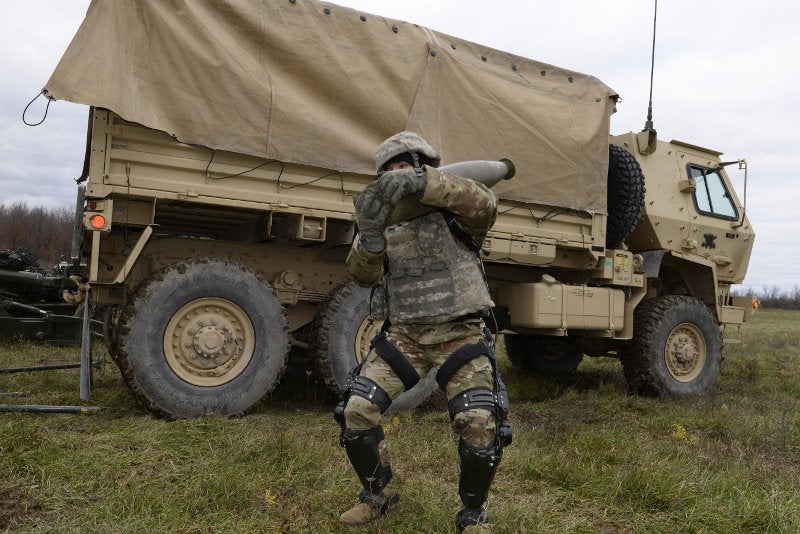
The US Army Natick Soldier Research, Development and Engineering Center (NSRDEC) has awarded the ONYX exoskeleton development agreement.
Awarded to Lockheed Martin, the two-year, sole-source $6.9m agreement will see the company optimise components of the ONYX exoskeleton for future soldier demonstrations.
The enhancements will be assessed by the University of Florida prior to NSRDEC soldier demonstrations, which are scheduled to take place next year.
ONYX is a powered, lower-body exoskeleton that uses electro-mechanical knee actuators, a suite of sensors, and an artificial intelligence (AI) computer to boost human strength and endurance.
Lockheed Martin Missiles and Fire Control exoskeleton technologies programme manager Keith Maxwell said: “Innovative human / machine technologies like ONYX can improve human performance, decrease injury and reduce fatigue to help soldiers accomplish physically demanding tasks.
“This award brings us one step closer to equipping future forces with advanced exoskeleton capabilities.”
The ONYX exoskeleton uses B-Temia’s Dermoskeleton technology to counteract overstress on the lower back and legs, as well as reduce fatigue and increase endurance.
In November 2017, the University of Michigan Human Neuromechanics Laboratory in the US conducted an independently funded study on Lockheed Martin’s exoskeleton.
The study found participants who wore the exoskeleton and carried a 40lb backpack showed a statistically significant reduction in exertion.
The exoskeleton has been designed to support and boost leg capacity for physically demanding tasks that require walking up steep inclines and stairs, as well as lifting or dragging heavy loads.



